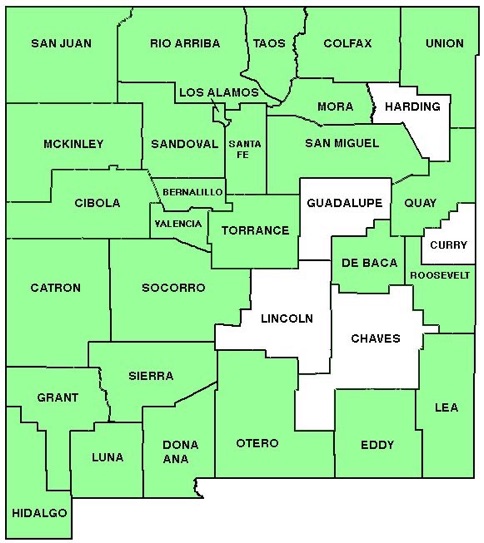WILDFLOWERS OF NEW MEXICO
In late summer dozens of colorful flower heads cover the branches of this erect, 2–4 foot tall bushy plant, usually with a single stem with numerous upper branches. Ray flower color varies from bright purple to occasionally whitish. Note the mid-stem leaves do not clasp the stem. Common in the wind-blown sandy soils of the desert.
FLOWERS: August (April)–November. Composite with 15–25 purple to pink, rarely white, ray flowers, 1/4–1/2 inch long (5–12 mm); orange-yellow disk flowers; phyllaries (below flower) with tips erect to spreading or curled, green with the lower 3/4 white or tan, often with narrow green stripe down the center, generally not covered with sticky glands.
LEAVES: Alternate. Blade stemless (sessile), linear to lance-shaped, mid-stem leaves 3/8–4 inches long (1 to 10 cm) by 1/16–1/4-inch wide (1.5–6 mm) and do not clasp the stem; margins with small teeth tipped with spines.
HABITAT: Windblown sand, gravelly soils, roadsides, disturbed areas; cottonwood bosques, desert grasslands and scrub, pinyon-juniper, ponderosa woodlands.
ELEVATION: 3,400–9,000 feet.
RANGE: Western U. S.
SIMILAR SPECIES: The look-alike Sticky Aster, D. bigelovii, tends to have deeper purple ray flowers, grow at higher elevations (4,800–12,000 feet), have sticky-glandular phyllaries that are green at least 3/4 the length, and clasping mid-stem leaves. Another mid- to high- elevation species in western NM, Shaggy-cup Tansyaster, D. asteroides, has mid-stem leaves 1/4–3/4-inch wide (6–20 mm), and ray flowers 3/8–3/4-inch long (10–20 mm).
NM COUNTIES: Nearly statewide in low- to mid-elevation arid habitats: Bernalillo, Catron, Cibola, Colfax, De Baca, Dona Ana, Eddy, Grant, Lea, Los Alamos, McKinley, Mora, Otero, Quay, Rio Arriba, Roosevelt, San Juan, San Miguel, Sandoval, Santa Fe, Sierra, Socorro, Taos, Torrance, Union, Valencia.

PURPLE ASTER
DIETERIA CANESCENS (MACHAERANTHERA CANESCENS)
Aster Family, Asteraceae
Biennial, short-lived perennial herb



THE CONTENTS OF THIS WEBSITE ARE COPYRIGHTED AND CANNOT BE USED
WITHOUT PERMISSION OF GEORGE OXFORD MILLER

Lower half of phyllaries white-tan with a green stripe.

Rare white coloration.

Range map for
Dieteria canescens

EMAIL ME